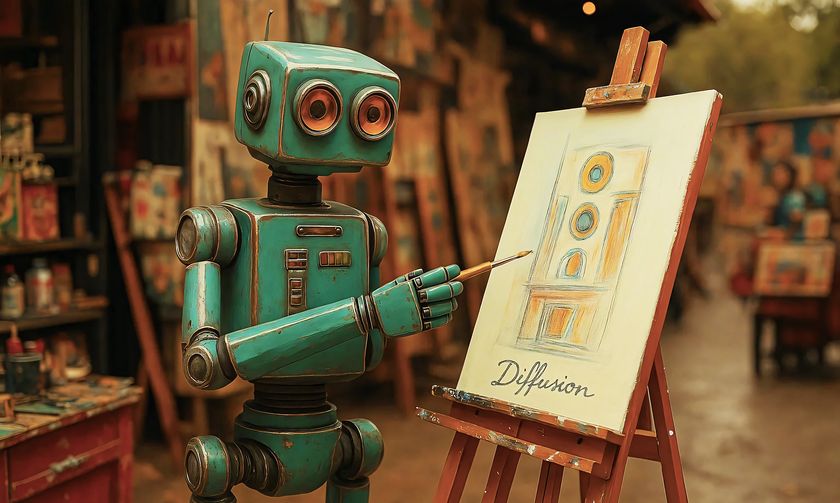Is hardware dead? Why the future of tech is software-defined
Get ready for a virtualised future and IT-as-a-Service
What is software-defined storage?
This one has been overused by incessant marketing, but it's a simple concept; using programming to eliminate the constraints of physical hardware. "We are seeing an increasing number of IT managers move away from traditional infrastructures that consist of lots of different pieces of hardware, and opt for software-defined storage and hyper-converged solutions," says Albie Attias, managing director of hardware supplier King of Servers. "It means running a storage array on a single unit of commodity storage hardware." Just 9% of UK businesses currently use software-defined storage, according to a recent survey by SUSE.
What is software-defined radio?
Who needs modulators, amplifiers and detectors when you've got software? Software-defined radio (SDR) replaces and automates all that hardware with computing power and data processing, and can consequently change frequency, bandwidth or radio standard in an instant, allowing a much more dynamic use of the radio spectrum. One type is Digital-RF, which processes GHz radio signals in digital circuits.
"The Moore’s Law-driven cost advantage of digital circuits will mean that Digital-RF radio will eventually displace analogue radio from many applications," says Bryan Donoghue, Digital Systems Group Leader, Cambridge Consultants, which created a Digital-RF radio system called Pizzicato. "These flexible radios will allow engineers to be far more creative, perhaps allowing cellular and other radio standards to evolve at rapid pace."
However, radio engineers won’t be out of business just yet; analogue circuits are still used to amplify and to filter out some radio signals.

The end of hardware… or a hybrid future?
The budgets, long lead-times, complex installations and messy maintenance contracts – all of these were intrinsic to IT. However, there's been a significant shift away from pre-programmed hardware and software vendors in the last decade or so. So is hardware dead?
“What's dead are the long procurement cycles needed to access hardware resources you need," says Patrick Malatack, VP Product at Twilio, whose API is powering communications for Airbnb, WhatsApp and TransferWise. Businesses are seeing competition from tech giants like Amazon and Google, but also from nimble startups who are disrupting their category because they can ship better services faster. "Every established enterprise is feeling the pressure to compete in this new era of software," he says.
“Although software is on the rise, hardware is far from dead," says Attias, who thinks that hardware's physical form will merely change, adding: "In 10 to 15 years I expect robots, drones and smart devices to become a regular feature of the modern workplace."
Are you a pro? Subscribe to our newsletter
Sign up to the TechRadar Pro newsletter to get all the top news, opinion, features and guidance your business needs to succeed!
Others agree, but for different reasons. "There is a way to go until hardware is phased out completely," says John English, Senior Product Manager at Netscout, who gives the example of the telecoms industry's effort to create virtualised environments. "Functions cannot be simply transferred from hardware to the cloud – they need to be rewritten to be cloud-native and micro service and container-based, and this is going to take time – a lot more time than people realise."
The foreseeable future, then, is one of hybrid networks where software and hardware work in sync.

Who are software-defined people?
So forget the machines; in this new era the IT industry needs a ‘software people’ mind-set. "The ability to adapt and thrive in the digital environment decides which companies will succeed and which will face extinction," says Malatack, who thinks that software people view the world through the lens of software, and share the belief that any problem can be solved with it.
“To meet increasing customer demand, businesses need to move away from the era of high-stakes IT with costly professional services and once-in-a-decade purchasing decisions – the era of cloud APIs puts the roadmap back in control of enterprises, enabling them to ship updates quickly and innovate often,” he says, adding: “With software, it is no longer a case of build or buy, but build or die.”
Jamie is a freelance tech, travel and space journalist based in the UK. He’s been writing regularly for Techradar since it was launched in 2008 and also writes regularly for Forbes, The Telegraph, the South China Morning Post, Sky & Telescope and the Sky At Night magazine as well as other Future titles T3, Digital Camera World, All About Space and Space.com. He also edits two of his own websites, TravGear.com and WhenIsTheNextEclipse.com that reflect his obsession with travel gear and solar eclipse travel. He is the author of A Stargazing Program For Beginners (Springer, 2015),












